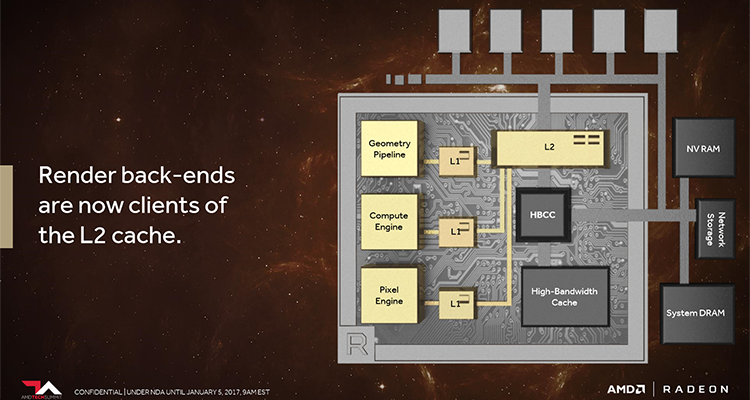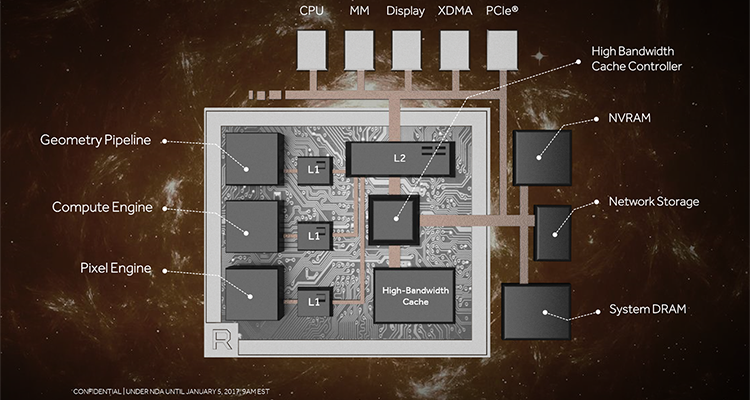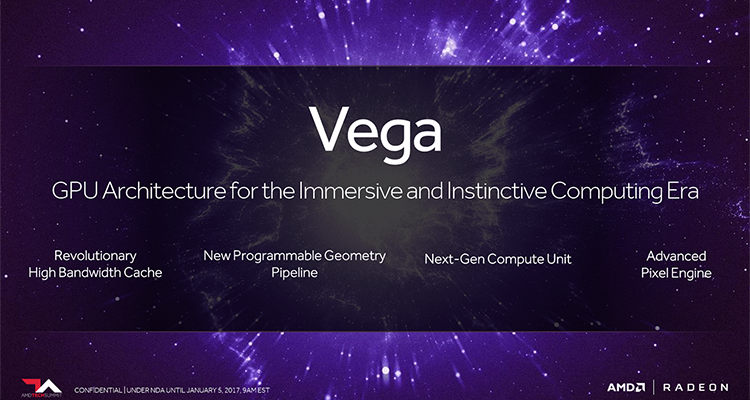Next-gen Pixel Engine
One of the key aims of every architecture is to reduce the amount of actual work the GPU has to do. Techniques such as memory compression and discarding everything that won't be seen by the gamer before it has to be processed are improved each iteration. These save power and increase performance.
AMD is also debuting what it calls a drawstream binning rasteriser (DSBR) to help with pixel shading. It works by using a tile-based rendering that improves efficiency. Helping further is Vega's ability to use L2 memory, reducing the need to move data around the chip and burn power.
Plenty of Potential
Though we can take a good guess of the Vega GPU's shader and speed composition by looking at the vital stats of the MI25 Instinct accelerator - which would provide 12.5 TFLOPS in standard single-precision performance - AMD has yet to divulge the finer details.
It appears to be a bigger, refined version of Polaris, with more emphasis on non-gaming, mixed-precision workloads than ever before. That said, some of the design decisions imitate the progress seen on consoles, in an effort to boost efficiency, so we imagine a scaled-up Polaris with these kinds of improvements would be a reasonable match for the upcoming Nvidia GeForce GTX 1080 Ti that in turn is based on the extant Titan X.
The architecture blueprint for Vega feels like an attempt to build a lean, mean yet still big GPU. More memory bandwidth, more capacity, smarter access to a larger pool, improved memory usage, better geometry throughput, and enhanced precision modes are the hallmarks of Vega.
A word of caution before getting too excited about what you will see in a few months' time. Historically, AMD has always had a lead in on-paper specifications: Vega seems no different, so it will be up to the software team to extract Nvidia-like efficiency from the design. If it can do that, Vega, in its best form, will become a real 4K60 card.

















